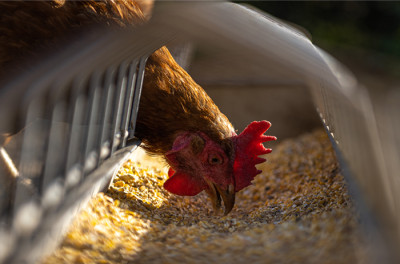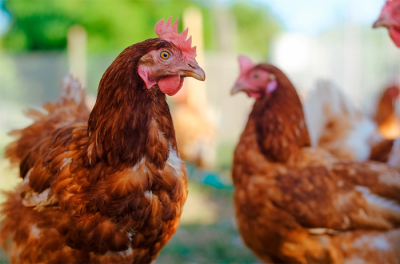

Say NO to Mikotoksin
WHAT IS MYCOTOXIN?
Mycotoxicosis is a disease caused by mycotoxin contamination in the feed consumed. Mycotoxins generally grow in high-temperature environments with high humidity.
Mycotoxins are secondary metabolic products of filamentous fungi, which in some conditions it can develop in plant-based foods (corn, rice, etc). Aspergillus sp, Penicillium sp, and Fusarium sp are the most common types of mold that produce mycotoxin poisons.
Aflatoxins and Fumonisins are mycotoxins that contaminate most of the world's staple foods, including corn, cereals, peanuts, and other nuts. Mycotoxins are known to be immunosuppressive (suppresses the immune system), although diseases caused by mycotoxins are not contagious.
MYCOTOXIN IN CHICKEN
Mycotoxins are closely related to contaminated feed, either from the raw materials, from the bran used during the DOC period or contaminated from storage. Aflatoxin formation in corn can occur during the late growth stages, drying, and poor storage management. Meanwhile, mycotoxins in bran are formed during post-harvest rice and are found at low levels. Generally, mycotoxins that contaminate feed will be more than one type of mycotoxin.
The symptoms of chickens experiencing mycotoxicosis are:
- Respiratory disorders, chickens appear gasping
- Growth inhibitor
- Decrease in egg production
Necropsy results for chickens with mycotoxicosis:
- The presence of a typical hump in the respiratory tract to the abdominal cavity
- Liver discoloration

1.Headache on air sac & abdominal 2.Fat Head over water sac 3.Spotted lesion on liver
HANDLING AND PREVENTION
Chickens that are infected by mycotoxins can be given the following treatments:
- Separate the stunting chickens
- Administration of cupric sulfate in drinking water at a dose of 1 gram/5 liters of drinking water
- Administration of Agrisol or Cyprotylogrin for respiratory infections of chickens
- Administration of Phycurma as a hepatoprotection, increases appetite, and increases productivity
- Routine spraying using Desgrin to prevent secondary infection due to microbes around the cage.
Meanwhile, the things we can do to prevent the presence of mycotoxins in both the feed and the husks are used as follows.
- Ensuring the quality of the raw material
- Provision of Diatomite toxin binder for corn or bran with poor quality
- Giving Phycurma as a hepatoprotection
- Fumigation of the cage using Fumisure before the chick-in period.
As the saying goes "prevention is better than cure", it is better for us to take precautions to avoid inflated costs in the event of an outbreak.
By : drh. Eka Syafrizal M
You may also like

Probiotics’ Impact on Lowering Ammonia Levels and...
Air quality within poultry houses is a crucial fac...

The Role of Prebiotics in Supporting Gut-Associate...
Gut-Associated Lymphoid Tissue (GALT) is the large...

Gut Health, Strong Flock: The Key to Optimal Poult...
Poultry productivity, particularly in the broiler...